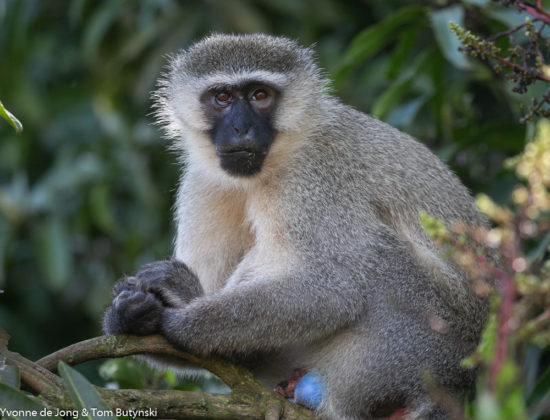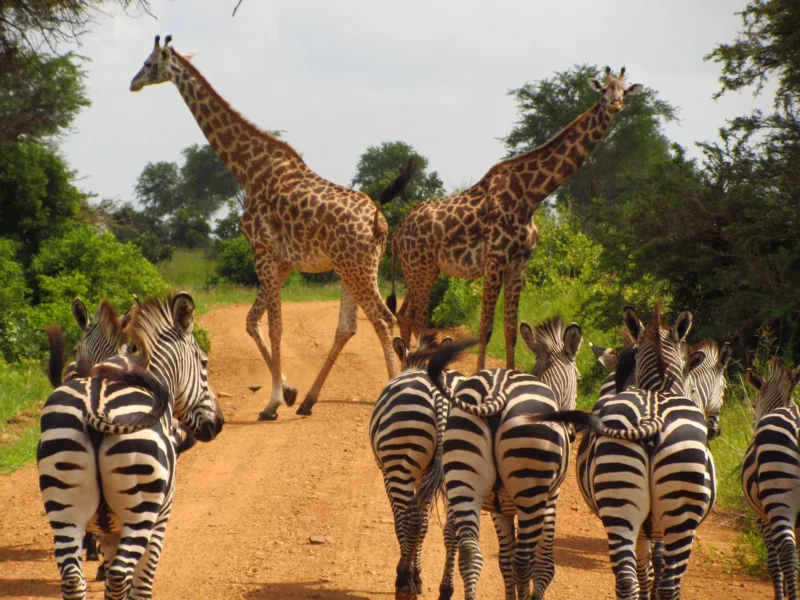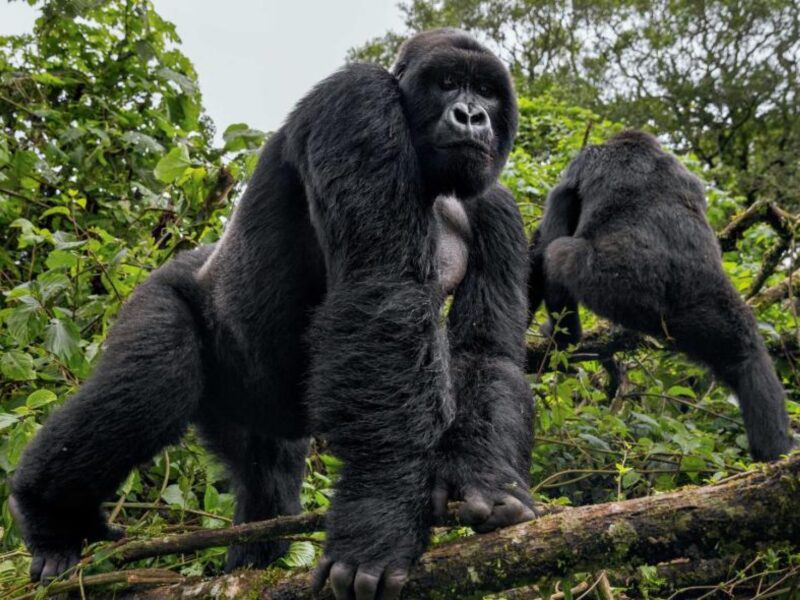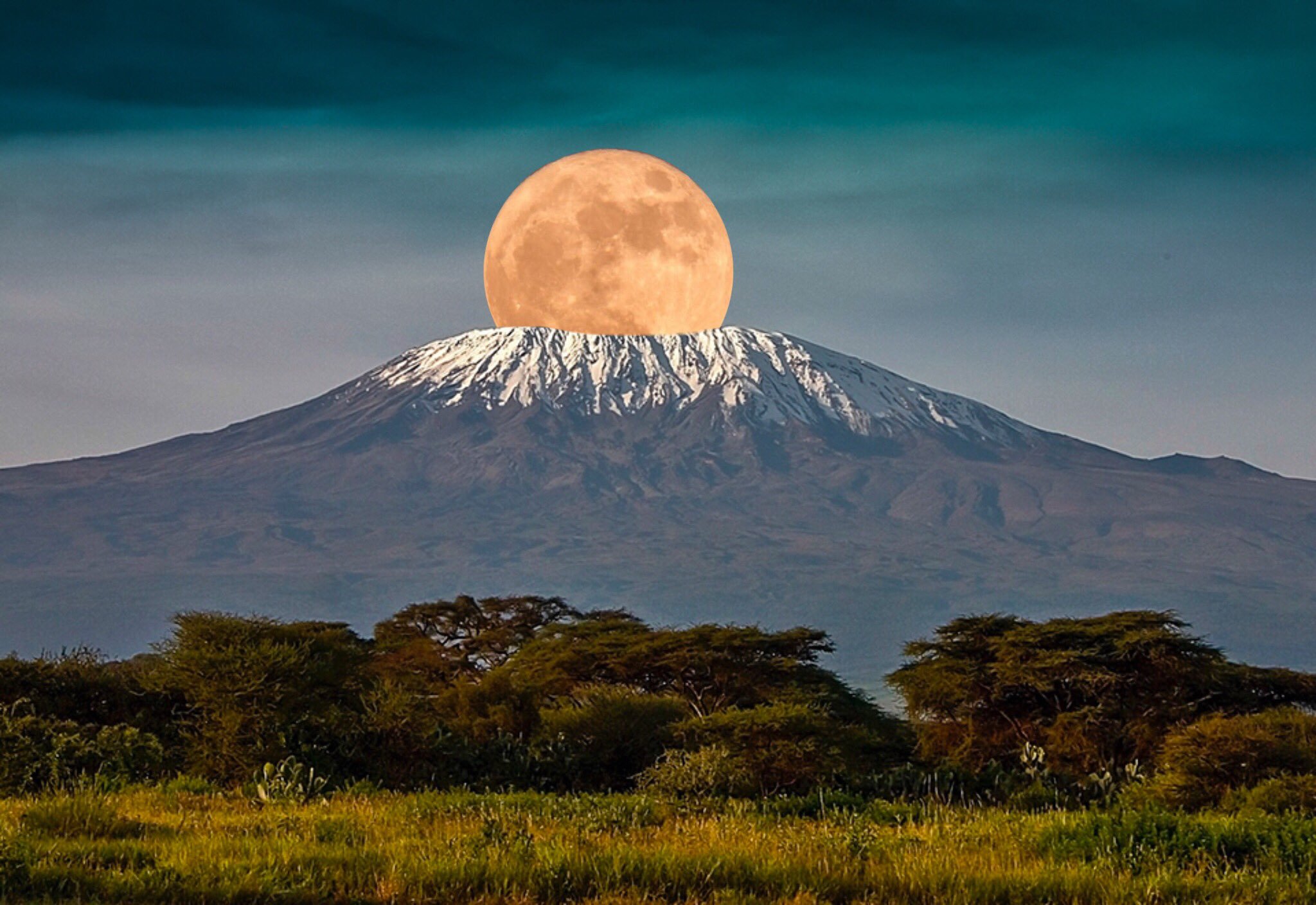
Mount Kilimanjalo: The Majestic, Iconic Tanzanian Mountain.
April 10, 2025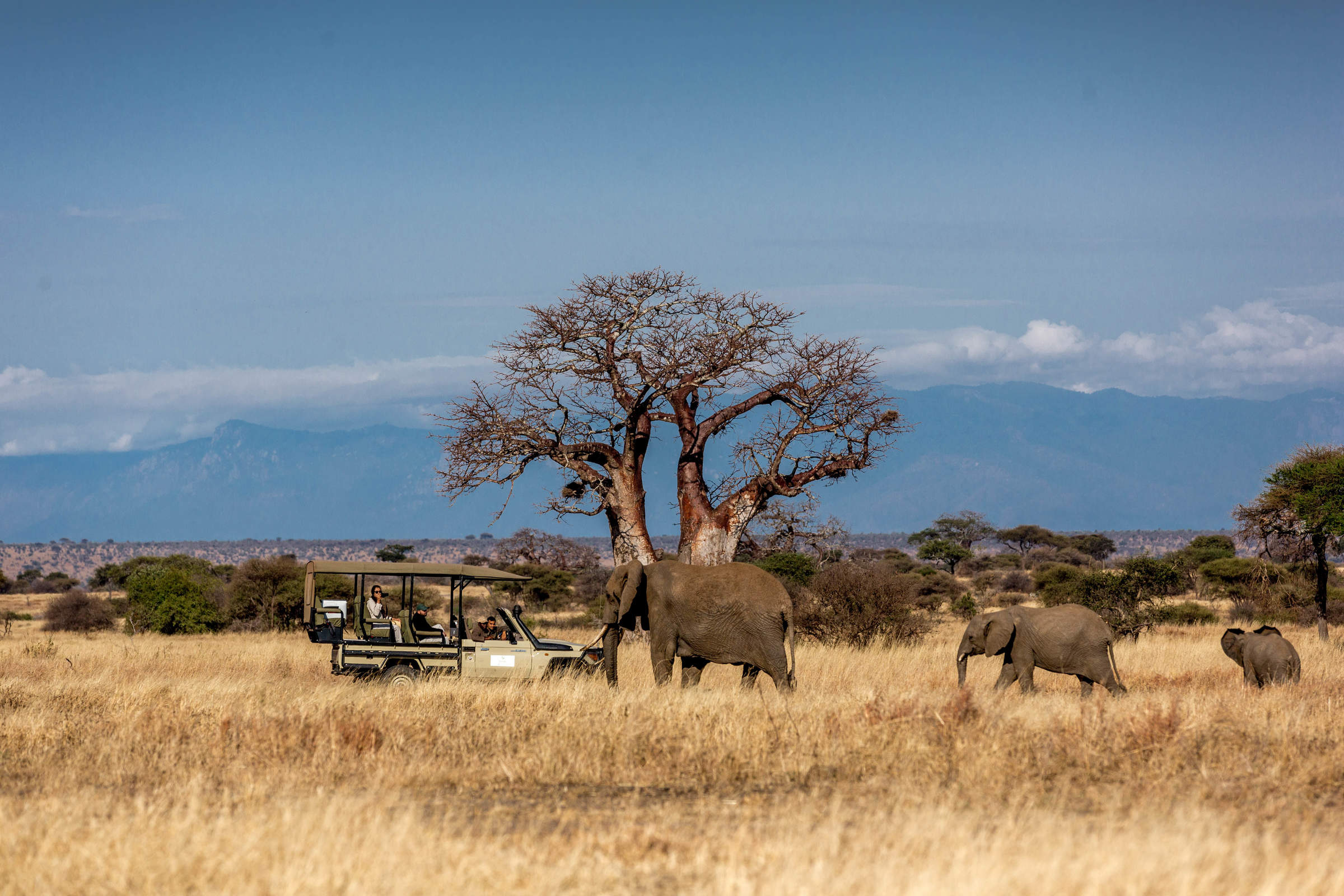
Tarangire National Park Tanzania
April 11, 2025Monkeys in Uganda
Monkeys in Uganda are an integral part of the country’s diverse and rich wildlife. Uganda, located in East Africa, is home to a variety of monkey species that thrive in the country’s varied habitats, ranging from tropical rainforests to savannahs. Here’s a detailed look at the different monkeys found in Uganda:
1. Types of Monkeys in Uganda
Uganda is home to over 13 species of primates, many of which are monkeys. These monkeys are primarily found in the forests, savannahs, and mountain regions across the country. Some of the most notable monkey species in Uganda include:
a)Chimpanzees
Chimpanzees (Pan troglodytes) in Uganda are one of the country’s most iconic and endangered species. Uganda is home to one of the largest populations of wild chimpanzees in East Africa, particularly in areas like Kibale National Park, Budongo Forest, and Kalinzu Forest.
Behavior & Ecology:
– Social Structure: Chimpanzees live in large communities, led by an alpha male. They are highly social, form strong bonds, and communicate through vocalizations and gestures.
– Diet: They are omnivores, eating fruits, leaves, insects, and occasionally hunting small mammals. They are also known for using tools, like sticks to catch termites.
-Reproduction: Female chimpanzees give birth to a single offspring after about 230 days of gestation, and care for them for several years.
Conservation:
Chimpanzees are endangered, facing threats like habitat loss, poaching, human-wildlife conflict, and disease. Conservation efforts include protected areas like Kibale and Budongo, eco-tourism initiatives (e.g., chimpanzee trekking), and community outreach programs.
Tourism:
Chimpanzee trekking in Uganda is a popular activity, allowing tourists to see chimpanzees in their natural habitat while supporting conservation efforts.
In summary, Uganda plays a crucial role in the conservation of chimpanzees, offering opportunities to both study and protect these incredible apes.
b)Vervet Monkeys (Chlorocebus pygerythrus)
In Uganda, vervet monkeys can be seen in national parks like Queen Elizabeth National Park and Murchison Falls National Park, as well as in rural areas and even near human settlements.
The Vervet monkey is one of the most common and widespread species in Uganda. Found in both urban and rural areas, these monkeys are known for their distinct greenish-blue faces. Vervet monkeys are highly adaptable and live in a variety of habitats, including savannahs, forests, and even agricultural land. They are social creatures that live in large troops, and their diet includes fruits, insects, and small animals.
Behavior & Ecology:
– Social Structure: Vervet monkeys live in large, social groups, typically led by an alpha male. They communicate through vocalizations, facial expressions, and body language.
– Diet: They are omnivores, eating fruits, seeds, insects, and small animals. They are opportunistic feeders and can adapt to different environments.
– Activity: Vervets are primarily arboreal (tree-dwelling) but will spend time on the ground as well.
Conservation:
Vervet monkeys are not endangered but face threats from habitat loss due to agriculture and urbanization. They are also involved in human-wildlife conflict, especially when they raid crops.
c) Colobus Monkeys (Black and White Colobus)
Uganda is home to two main species of Colobus monkeys: the Black-and-white Colobus (Colobus guereza) and the Ugandan Colobus. These monkeys are notable for their striking black and white fur. They are tree-dwellers that live in the forests of Uganda, particularly in Kibale National Park and Queen Elizabeth National Park. Colobus monkeys are mainly folivores (leaf-eaters), although they may also eat fruits and flowers. They are often seen in large, social groups.
Key Facts:
– Appearance: They have striking black fur with white fringed tails and facial hair.
– Behavior: Colobus monkeys are arboreal (tree-dwelling) and live in large social groups. They are mostly folivores, feeding on leaves, fruits, and flowers.
– Conservation: While not endangered, they face threats from habitat loss due to deforestation.
Colobus monkeys are often seen in Uganda’s rainforests, playing an important role in seed dispersal and forest regeneration.
d)L’Hoest’s Monkeys (Cercopithecus lhoesti)
L’Hoest’s monkeys are found in the forests of central and western Uganda, particularly in Bwindi Impenetrable National Park and Kibale Forest National Park. These monkeys have a distinctive black coat and are typically found in the canopy. They are shy and elusive, often seen in groups of 3 to 10 individuals. Their diet consists mainly of fruits, leaves, and seeds.
Key Facts:
– Appearance: They have a black coat with a white patch on the throat and a distinct face with a white “mustache.”
– Behavior: L’Hoest’s monkeys are arboreal and live in small groups. They are primarily frugivores but also eat leaves and insects.
– Conservation: These monkeys are considered vulnerable due to habitat loss and fragmentation.
L’Hoest’s monkeys are an important part of Uganda’s forest ecosystems and are occasionally spotted by tourists during primate trekking.
e) Golden Monkeys (Cercopithecus kandti)
Golden monkeys are a rare and endemic species found only in the high-altitude forests of Uganda and Rwanda. They are often spotted in Mgahinga Gorilla National Park, which is located in the Virunga Mountains. Golden monkeys are small, with a golden-orange coat and a black face. They are arboreal and live in social groups. The species is considered endangered due to habitat loss and fragmentation.
Key Facts:
– Appearance: They have a striking golden-orange coat with a black face and are smaller than other primates.
– Behavior: Golden monkeys are arboreal and live in small groups. They primarily feed on leaves, fruits, and bamboo shoots.
– Conservation: Golden monkeys are endangered due to habitat loss and fragmentation, mainly because of human activities in the Virunga region.
Golden monkeys are an important attraction for eco-tourism in Uganda, and they are often seen alongside mountain gorillas in Mgahinga.
f) Blue Monkeys (Cercopithecus mitis)
Blue monkeys are common in the forests and woodlands of Uganda, particularly in the Kibale National Park and Queen Elizabeth National Park. They have a distinct blue-grey coat and are mostly arboreal. Blue monkeys are frugivores, feeding mainly on fruits but will also eat leaves, flowers, and insects. They are typically found in large, cohesive groups.
Key Facts:
– Appearance: Blue monkeys have a grey-blue coat, with a pale face and distinctive dark eyes.
– Behavior: They are primarily arboreal, living in large groups. Blue monkeys feed mainly on fruits but also eat leaves, seeds, and insects.
– Conservation: While not endangered, they face threats from habitat loss due to deforestation.
Blue monkeys play an important role in seed dispersal and contribute to maintaining healthy ecosystems in Uganda’s forests.
g) Baboons (Papio anubis and Papio cynocephalus)
Baboons are intelligent and adaptable, contributing to Uganda’s diverse wildlife and often seen in national parks and near human settlements.
Baboons are also present in Uganda, with two species found in the country: the Olive Baboon (Papio anubis) and the Yellow Baboon (Papio cynocephalus). These monkeys are known for their intelligence, social structure, and adaptability. Baboons are primarily terrestrial but will climb trees when needed. They are opportunistic omnivores, eating a wide range of foods, including fruits, seeds, insects, and small mammals. Baboons are often seen in Murchison Falls National Park, Queen Elizabeth National Park, and Kibale National Park.
Key Facts:
– Appearance: Baboons are large, with long tails and distinct facial features, including a pronounced muzzle.
– Behavior: They are highly social, living in troops that are led by an alpha male. Baboons are omnivores, feeding on fruits, seeds, insects, and small animals.
– Conservation: Baboons are not endangered but face human-wildlife conflict, especially when raiding crops.
2. Monkey Habitats in Uganda
Monkeys in Uganda are found in diverse ecosystems, including:
– Tropical Rainforests: These provide rich food sources and cover for many species like the Colobus monkeys, Vervet monkeys, and L’Hoest’s monkeys. Kibale National Park, a UNESCO World Heritage Site, is one of the most famous spots for primate sightings.
– Savannahs and Grasslands: Species such as baboons and vervet monkeys are common in these areas, particularly in Queen Elizabeth National Park and Murchison Falls National Park.
– Mountain Forests: In the high-altitude regions of southwestern Uganda, species like the golden monkeys can be found in places like Mgahinga Gorilla National Park.
– Swamp Forests: Monkeys such as the Red-tailed monkeys and Blue monkeys can be seen in Uganda’s swamp forests and wetlands, including areas around Lake Victoria.
3. Conservation Status of Monkeys in Uganda
Some monkey species in Uganda are under threat due to habitat loss, poaching, and human-wildlife conflict. For example:
– Golden monkeys and L’Hoest’s monkeys are classified as endangered due to their limited distribution and the encroachment of agriculture into their forest habitats.
– Vervet monkeys, though not endangered, can sometimes cause problems for farmers as they raid crops, leading to human-wildlife conflict.
– Chimpanzees, though technically apes, are also in need of conservation attention, and Uganda has established several protected areas for their preservation.
Key conservation efforts include:
– National Parks: Uganda has numerous protected areas, such as Bwindi Impenetrable National Park, Kibale National Park, and Mgahinga Gorilla National Park, which not only protect monkeys but also provide eco-tourism opportunities.
– Primate Research: Research on primate behavior and conservation is conducted at facilities like the Uganda Primate Research Centre and the Kibale Chimpanzee Project.
– Community Engagement: Local communities are increasingly involved in conservation efforts, with initiatives like beekeeping and eco-tourism providing sustainable livelihoods while protecting wildlife.
4. Tourism and Monkeys
Uganda is becoming a prime destination for wildlife tourism, especially for primates. Visitors can engage in chimpanzee and monkey trekking in various national parks, including Kibale and Bwindi Impenetrable National Park, which are famous for their diversity of primates. Tourists can also participate in birdwatching and visit mountain gorillas in areas like Bwindi, where monkeys like the golden monkey can also be seen.
5. Ecological Importance
Monkeys play an essential role in Uganda’s ecosystems. They help maintain healthy forest environments by dispersing seeds, pollinating plants, and keeping insect populations in check. Their social structures and behaviors are also of interest to researchers, as they offer insights into primate evolution and social dynamics.
In summary, Uganda’s diverse landscapes provide a haven for a wide range of monkey species, some of which are globally significant due to their conservation status. The country’s efforts to protect these animals, along with the booming eco-tourism industry, are helping to ensure that these primates continue to thrive for generations to co

